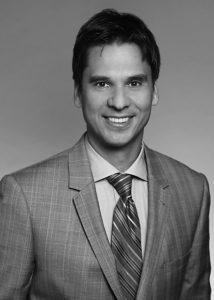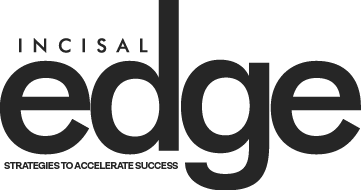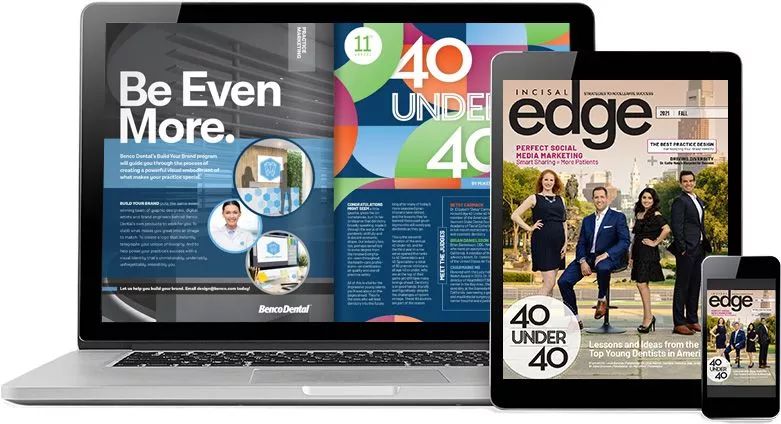As we all look for positive signs of recovery, economists are watching the dental comeback closely. Is dentistry a barometer of the bigger picture—or is it simply better prepared for survival?
Last week, a New York Times article by Sarah Kliff entitled “How’s The Economy? Watch The Dentists” posited that dentists could be the key indicator to monitor for how far the economy has recovered. It makes sense: the faster dentists bounce back, the more it probably means people feel safe resuming normal activities like healthcare (and more importantly, have the money to do so). One economist quoted in the article even suggested that the economy can’t be considered fully recovered if all dentists aren’t back to work.
Yet signs are emerging that dentists are a more unique business case than the Times article suggests. Just because patients are returning in large numbers to dental practices doesn’t mean they’re resuming other normal activities as well, even those that experts rank as carrying less risk for Covid-19 transmission. The bigger picture suggests that, while dentists won’t ride out this recession quite as easily as 2008, it does appear they’ll emerge better—possibly much, much better—than other businesses and professions. Given that, how reliable an indicator are they?

Marko Vujicic, Chief Economist and Vice President of the Health Policy Institute (HPI) at the American Dental Association, said in the article that he initially predicted “an elevator ride down and an escalator ride up” but dentistry has defied expectations and jobs are coming back much faster.
The rush to resume dental care…but not as much else.
A consumer poll conducted in mid-May by the Henry J. Kaiser Family Foundation showed that 82% of respondents have either already seen their dentist or plan to do so in the next three months.
Contrast that with numbers reported at the end of May by data intelligence firm Resonate. Their survey wave of 5,000 people revealed that the majority of Americans aren’t ready to resume normal activities, and nothing less than a vaccine will make them feel comfortable returning to travel, hotels, churches, concerts, live sports, rideshares and other things we wouldn’t have thought twice about doing just a few short months ago.
Dental care as a top consumer priority.
The two surveys reveal a pretty steep disconnect. How is it possible that most Americans are still leery of normal activities, but the vast majority are resuming dental care right now? Certainly, you could point to the fact that we’re looking at results from two different surveys conducted a few weeks apart. But they’d both have to be severely flawed, or one completely right and the other dead wrong, to adequately explain the vast gulf.
The more likely truth is that consumers are resuming the normal activities they choose to prioritize, and feel safe doing. They may be unwilling to spend money during uncertain times on, for instance, a weekend getaway to a destination that is only partly open, but they’ll budget money for healthcare, whether that means prophylaxis to avoid painful, costly problems in the future or treatment for issues that cropped up during quarantine. In addition, dentistry has a well-known emphasis on infection control, and the media has widely reported the comprehensive steps dentists are taking to safely treat patients.
Sharp decline, even stronger rebound.
Marko Vujicic, Chief Economist and Vice President of the Health Policy Institute (HPI) at the American Dental Association, said in the article that he initially predicted “an elevator ride down and an escalator ride up.” But dentistry has defied all expectations, and jobs are coming back much faster.
Vujicic, one of Incisal Edge‘s 32 Most Influential People in Dentistry for 2019, is arguably the economist whose finger is most strongly planted on the pulse of dentistry’s economic ripples. So, when the HPI reported on June 1 that 90% of dental practices in the US were open with 20% doing business as usual, it was welcome news for both dental professionals and anyone following dentistry as a signal of the economy’s regrowth. More good news: even for the 10% of practices that remain closed, the HPI said 7% intend to reopen by the end of June.
“Obsessed with dentists.”
Betsey Stevenson, a professor of public policy and economics at the University of Michigan and faculty research associate at the National Bureau of Economic Research, says in the Times piece that she’s “obsessed with dentists because, if the only thing we’re doing is putting the economy on pause, and then going back to normal, all of them should be coming back.”
Then came last week’s jobs report, where dentistry fueled a major portion of US growth. Axios characterized the report as one that “blew away” economists’ expectations, and rightly so; of the 312,000 jobs the health care sector added in May, 245,000 were in dentists’ offices. If dentistry is the key indicator for economic recovery as a whole, how much lag time do we allow for other sectors to start seeing positive signs even remotely as encouraging? No one seems to know.
An indicator, but not a mirror.
Covid-19 is testing business models worldwide, and we’re seeing many with widening cracks that immediately threaten their viability. Dentistry is clearly not one of those, and it’s no accident that a profession which leans so heavily on innovation will be one of the pandemic’s survival success stories. Whether dentistry is the key indicator for the progress of our economy is debatable, but it is certainly one of them, and a welcome beacon of hope as well. It may not be a direct reflection of the state of consumer confidence, but it at least goes to prove that durable industries aren’t going anywhere.
Judging by the average consumer’s eagerness to resume dental care, dentists are much, much better positioned than businesses like retail, foodservice, automotive, air travel and a scary number of others that will likely continue to see a slow, fitful, uncertain comeback. One thing’s for sure: economists will have to continue debating this amongst themselves. Most dentists are too busy right now to weigh in.



